How To Master The Bench Press
Our expert guide will help you refine your bench press form, with advice for beginners and detail on the finer points for more experienced lifters
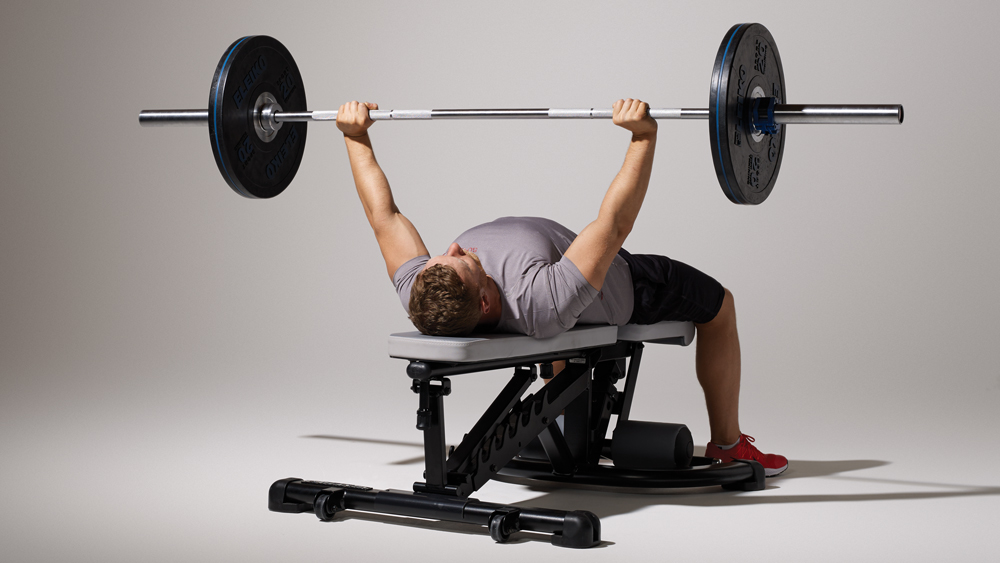
Walk into any gym in the world, regardless of its size, location or clientele, and you’ll find they all have one thing in common: there will be a bench positioned underneath a secured barbell ready for the next person to start bench pressing.
It’s not surprising that the bench press is such a popular move. Once you’ve mastered the basic movement pattern and your bench press form, you will see rapid progress in how strong you are, as well as size gains to three major muscle groups: the chest, the front shoulders and the triceps.
But if you are new to the gym or new to lifting weights, how do you know if you are ready to take on the bench press? Here’s our guide to developing your bench press form.
When are you ready to start bench pressing?
First, before you get underneath the bar you need to make sure you have the strength on your chest, shoulders and triceps to manage the weight of the empty bar. The Olympic barbell, which is the standard one used to bench press in most decent gyms, weighs exactly 20kg. That may or may not sound like a lot depending on your weight training experience. If it does, then you need to get up to speed with press-ups first.
Start in the press-up position with your hands underneath your shoulders, your core tight, and your toes together so your body forms a straight line from head to heels. Bend your elbows to lower your chest down to the floor, pause for a second at the bottom position, then press back powerfully to the start (but don’t lock out your arms at the top).
If you’ve never done a press-up before then you need to focus on doing one quality rep at a time, and gradually building up your strength until you can do ten good reps without stopping.
Once you can you are ready for an empty bar bench press (following the form guide below), but only if you have a “spotter” who can stand behind you to assist your lift if you start to struggle. Read on for our comprehensive guide to the bench press to add muscle size and strength across your upper body.
Sign up for workout ideas, training advice, reviews of the latest gear and more.
How To Bench Press
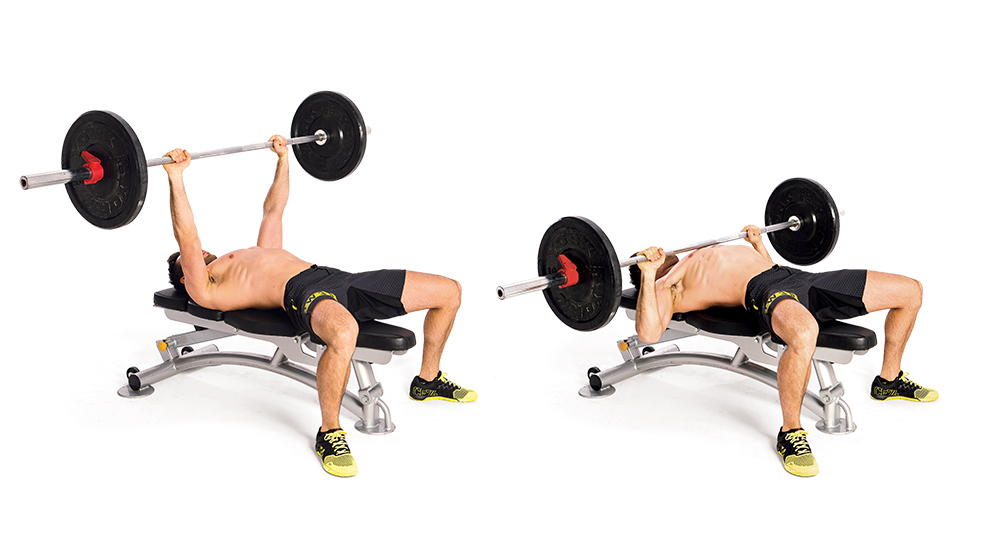
Let’s go through the basics, before we talk about tweaking your bench press form and improving the move.
- Lie flat on your back on a bench.
- Grip the bar with hands just wider than shoulder-width apart, so when you’re at the bottom of your move your hands are directly above your elbows. This allows for maximum force generation.
- Bring the bar slowly down to your chest as you breathe in.
- Push up as you breathe out, gripping the bar hard and watching a spot on the ceiling rather than the bar, so you can ensure it travels the same path every time.
What could go wrong? In reality it can be very easy to tear the stabilising rotator cuff muscles around your shoulders that can be difficult to patch up. Prevention is far better than cure, so set your ego to one side and first learn how to perform it safely.
Watching others in the weights room it might be tempting to start pressing with the bench at different angles. While it’s true that muscle activation in the upper chest is greater when pressing on a bench set at a 30° or 45° incline than on a flat bench (so says the European Journal Of Sports Science) activation of the lower pec muscles is greater on a flat bench. According to a different report in the European Journal Of Sports Science, when researchers asked subjects to perform sets of six reps at 65% of their one-repetition maximum they found that muscle stimulation was greater when the bench was flat than when it was placed at a 15°, 30° or 45° angle. So make the flat bench the cornerstone of your chest-building strategy and include incline variations to hit your upper chest and anterior delts (the fronts of your shoulders).
Bench Press FAQs
How much should a beginner bench press?
The answer isn’t as simple as a single number, unfortunately, because it will depend on your size and previous training experience. Instead, gauge the weight you load on the bar by how it feels to lift, says NSCA-accredited strength and conditioning coach Andrew Reay, who spoke to us on behalf of sports coach booking platform Sport Session.
“It’s tricky to give an amount of weight because everyone is different,” says Reay. “I suggest starting out light, then finding a weight you can lift for three sets of eight reps. At the end of the third set, if you feel like you’ve got two or three reps left in the tank, that’s a good starting point. It should feel challenging, but your form shouldn’t deteriorate.”
From there, he says, you can start adding a small amount of extra weight to the bar with each training session as your strength and bench pressing ability improves.
What is a good average bench press?
Again, Reay says there isn’t a specific number for everyone to aim for here, but he does suggest a way to calculate your next bench press goal using your bodyweight.
“When you’re starting out, you should be lifting around half of your bodyweight, but again that will depend on a lot of factors,” says Reay. “Then, when you’re comfortable with the exercise, I think a good target is to get somewhere near lifting your bodyweight.
“People who are professionals in sport may get up to 1.3 to 1.5 times their bodyweight, and then you get powerlifters who can lift incredible amounts. But, with the people I train, I think if you can lift your own bodyweight in a bench press – and it will take time – then that’s a good marker to try to hit.”
Can you bench press every day?
There’s no law against hammering your chest daily with relentless bench press sessions, but Reay cautions that it’s probably not a good idea if you want to maximise your strength and muscle gains.
“What you need to do is let your body recover from the exercise,” says Reay. “You want to have at least one day off so your body can recover from it.”
“A second thing is to follow a well-rounded programme. There are a lot of body parts and muscles that you need to train, and you would have to sacrifice something to bench press every day. You would overdevelop the muscles used in a bench press and not pay enough attention to the supporting muscles and other body parts.
“I’m sure people have bench pressed every day for an amount of time and got away with it, but I would suggest that you want to have a break in between bench press days to recover and focus on the rest of your body.”
Andrew Reay is an NSCA-accredited strength and conditioning coach, and the current head of sports and conditioning at physiotherapist chain Pure Sports Med. Reay is a former professional rugby player, with clubs including Harlequins and Bristol.
How can you increase the weight you bench press?
Ah, the million-dollar question. “The simplest answer, as with any movement or muscle, is to progressively overload the movement,” says Karl Bratland, a functional fitness coach with a USA Weightlifting Level 1 qualification. “You can gradually increase the weight, or change the amount of volume (reps/sets) you do. If you lift 150 lb for eight reps, try to lift 155lb for eight reps in your next session. That’s the simplest and most basic answer.”
Progressive overload should be your first thought when trying to increase how much you can lift. However, there are other ways to make strength gains.
“Do different variations of the exercise like the incline and decline bench press, hitting the muscles at different angles, or add in exercises that target supporting muscles,” says Bratland. “You could also switch the barbell for dumbbells, or even bodyweight movements like push-ups.
“A mix of variations and accessory movements is going to help you increase your overall bench press, because you’re building different parts of the chest.
“If your shoulders or your triceps get stronger because you’ve been working them separately, that’s going to help you with your bench press as well.”
Finally, if you’re really struggling to break through a stubborn training plateau, Bratland suggests “advanced training techniques” such as tempo training, or adding resistance bands or chains to the barbell when performing a bench press.
What’s the difference between the barbell bench press and dumbbell bench press?
Although you’ll see people bench pressing a barbell in gyms the world over, the popularity of its dumbbell counterpart is on the rise. So is the barbell version on its way out? In short, no.
“The bench press is such a good compound exercise for building strength in the chest, as well as the shoulders and triceps, and you can lift more weight with the barbell than with dumbbells,” says Bratland.
“There’s only so much weight you can lift with a dumbbell. If you can’t lift 100lb dumbbells into the starting position, you can’t bench it. If you’re looking for maximal strength, you’re going to want to go to the barbell because you can lift more weight.”
However, that’s not to say the dumbbell bench press doesn’t have its place. “The dumbbell is going to allow you to get a little bit larger range of motion, because you can lower them below your chest,” Bratland says. “It’s also going to force a bit more stability as you’re holding the two dumbbells separately, so you’re going to have to work a bit more on stabilizing each one.
“Dumbbells are unilateral too [working each arm separately] so they can help balance out inefficiencies or imbalances if one side of your body is stronger.”
Karl Bratland is a functional fitness and nutritional coach with an online fitness coaching business offering custom fitness and nutrition plans. He has a master’s degree in Exercise Science and several fitness certifications including a USA Weightlifting L1 and CrossFit Trainer.
Bench Press Tips For Beginners
Whether you’re new to the move or you’re an old hand looking to check your bench press form, these tips from Jenna McKean, British powerlifter and Maximuscle ambassador, will help.
1. Points of contact
- Your feet should stay on the ground beneath or behind your knees. Press your feet into the floor to create tension in your hamstrings and glutes.
- Your head, shoulders and hips should all remain on the bench throughout the lift, and your shoulders should retract and press firmly into the bench to create a solid foundation.
2. The set-up
- Your eyes should be directly under the barbell and the bar should be no higher than your wrists when your arms are locked out overhead.
- For most people, your hands should be on the bar just a bit wider apart than your shoulders.
3. Unracking and re-racking
- Use a spotter! If you don’t have one, stop well before failure so that you can safely re-rack the bar.
- To unrack the bar, start with a strong lock-out where the bar is directly above your shoulders.
- Lower the bar under control for one or two seconds to approximately where a chest strap heart rate monitor would be, then press until your elbows are straight and you have the bar under control.
- Re-rack carefully and make sure the bar is secure before you release the tension in your arms.
Bench Press Form Tips
“For maximum strength and size gains, forget about the weight on the bar and focus on being as stable as possible on the bench to create tension from head to toe and get the most out of every rep,” says strength coach Andy McKenzie. Here’s more advice to boost your bench press form.
Get a grip
“Your hands should grip the bar about shoulder-width apart to maintain the best position to press the weight up,” says McKenzie. “If your grip is too wide you risk placing too much pressure on your shoulder joints, and going too narrow places a strain on your elbows. Grip the bar as hard as possible – when you press the bar up, imagine you’re trying to bring your hands together.” But don’t actually move them.
“On a heavy set, squeeze the bar as hard as possible for a second or two before taking it out of the rack,” says trainer Robert Kane. “According to the principle of irradiation, this’ll fire up the surrounding muscles and allow you to lift heavier. Oh, and don't forget the rule of thumb: wrap them around the bar. Some lifters use a thumbless grip, but it's nicknamed the ‘suicide’ grip for a reason.”
Keep your feet on the floor
As you drive your head, upper back and glutes into the bench, you need to do the same with your feet on the floor. This creates total-body tightness that allows your muscles to fire at their maximum potential. “Press your feet hard into the floor to flex your quads,” says strength coach Paul Carter (lift-run-bang.com). “The body works in synergy, so having your entire body as tight as possible will help you bench more weight instantly.”
Arch your lower back
“You need to maintain a strong arch in your lower back as you lift and lower the weight, so focus on getting into this position before you even put your hands on the bar,” says McKenzie. “Your glutes need to be in constant contact with the bench too, and tensing them hard enables you to maintain an arch in your lower back and keep your core braced, which is essential to keeping both your upper and lower body stable.”
“Most guys don’t get tight enough before they set up to bench,” says Carter. “You need to have a strong scapular retraction – so pull your shoulders down hard into the bench.” This will create tension across your torso to keep your body compact and tight, giving you the ability to push harder when lifting heavier.
Keep your elbows close
“Initiate each rep by bending your elbows to lower the bar slowly and under control until it touches your chest near the nipples,” says McKenzie. “Perfect form means keeping your elbows as close to your sides as possible as you lower the weight, then press back up powerfully.”
Be head strong
“The back of your head should be in contact with the bench from the moment you lie down to the moment you rack the weight,” says McKenzie. “Raising your head will have an effect on the rest of your body, preventing you from staying stable. Your shoulders and upper back should also be in contact with the bench for the duration of the set for stability purposes. Squeeze your shoulder blades together as you lower the bar to your chest.”
Common Beginner Bench Press Mistakes
To get the most from your bench press make sure you’re not falling foul of any of these common mistakes, as detailed by Will McAuley, former competitive powerlifter, and strength and conditioning coach at personal training studio PerformancePro.
Going too heavy
“Don’t try to lift more than you can,” says McAuley. “Your body will realise that it can’t handle it and lift your hips to put your chest in a more favourable position to contract and move the weight, messing up your form. The best way to correct this is to simply lighten the load.”
Not setting your shoulder blades
“Unlike a press-up, you want your shoulder blades to remain still during a bench press to help stabilise the barbell, and also to prevent injury to the shoulders while moving heavy loads,” says McAuley. “Before lifting the bar out of the rack, set your shoulder blades by pulling them back and down – as if you’re trying to push them into your back pockets. When you unrack the bar, keep them set by imagining pushing yourself into the bench instead of lifting the bar upwards.”
Moving your feet during the set
“Like the shoulder blades, your feet should stay still during the entire set,” says McAuley. “Moving your feet around means you’re not as tight as you should be. Make sure your feet are flat on the floor and push through them for the entire set, as if you’re trying to push yourself backwards off the bench.”
Changing your grip width
“When you bench press, where do you grab the bar?” asks McAuley. “Is it the same distance from the rings, or the smooth section of the bar, every time? If not, then you had better start becoming more consistent. Changing your grip width can have a huge effect on what muscles are working and how much weight you can lift. Having a slightly wider or narrower grip can make you drastically weaker or stronger, making it difficult to accurately gauge progress.”
Getting the chest touch wrong
“This could be bouncing the bar off your chest or touching it to your chest too high – or not touching your chest with the bar at all,” says McAuley. “These all have to do with the bottom of the rep as the bar approaches the chest. Very often, a lifter won’t bring the bar all the way to their chest. Make sure to touch your chest on every rep, if you feel you can’t then lower the weight on the bar.
“When you do touch your chest, don’t bounce it off your sternum! Tap your chest then press it up – you should be in control the entire time.
“Finally, make sure you’re touching the bar off your chest, not your collarbones. Unlike most barbell exercises, the bar should not move in a vertical line. Start directly above your shoulders and move downwards in a diagonal line to touch the middle of your chest.”
Using a thumbless grip
“Every time you grab the barbell your thumbs should be around the bar, especially for the bench press,” says McAuley. “Using a thumbless grip has no benefit and you risk literally dropping the bar onto your face, neck or chest. Grab the bar with your thumbs around it and squeeze it as hard as you can. This will help generate more force and recruit more muscles.”
Assistance Moves To Build Bench Strength
To work your muscles more effectively, and make greater gains, it’s vital to focus on correct bench press form. If you want to bench heavier, though, these exercises will help you by strengthening some of the key supporting muscles that work with the chest to lift and lower the bar.
1 Close-grip bench press
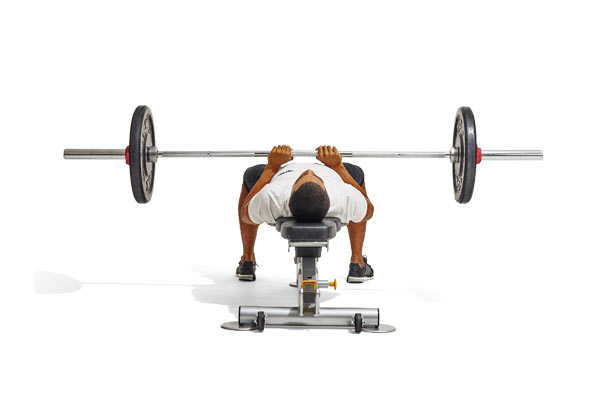
Benching with a narrow grip shifts the emphasis to your triceps while safeguarding your shoulders. It’s a good way to work on weaknesses in your regular bench press, or just get a bit more work in on arms day. Grip the bar with your hands roughly shoulder-width apart, then bring it down to your chest, keeping your elbows tucked in to your sides. Pause, then press it back to the starting position.
2 Incline bench press
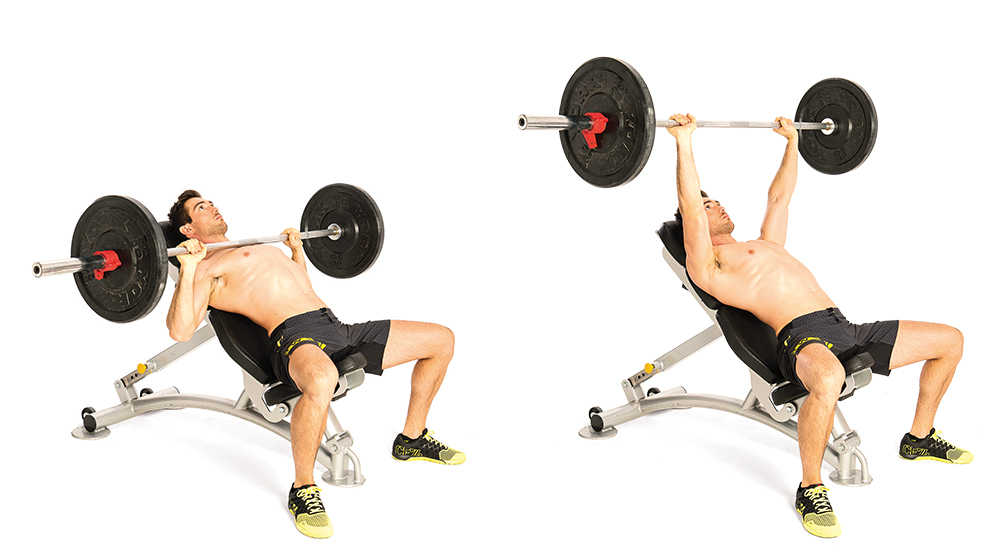
Pressing on an incline angle shifts the emphasis towards the upper portion of your pecs, but you won’t be able to lift as heavy as in the flat bench version. Lie on an incline bench, gripping a barbell with an overhand grip. Plant your feet on the floor. Lower the bar towards your chest, then press it back up to the start.
3 Dumbbell bench press
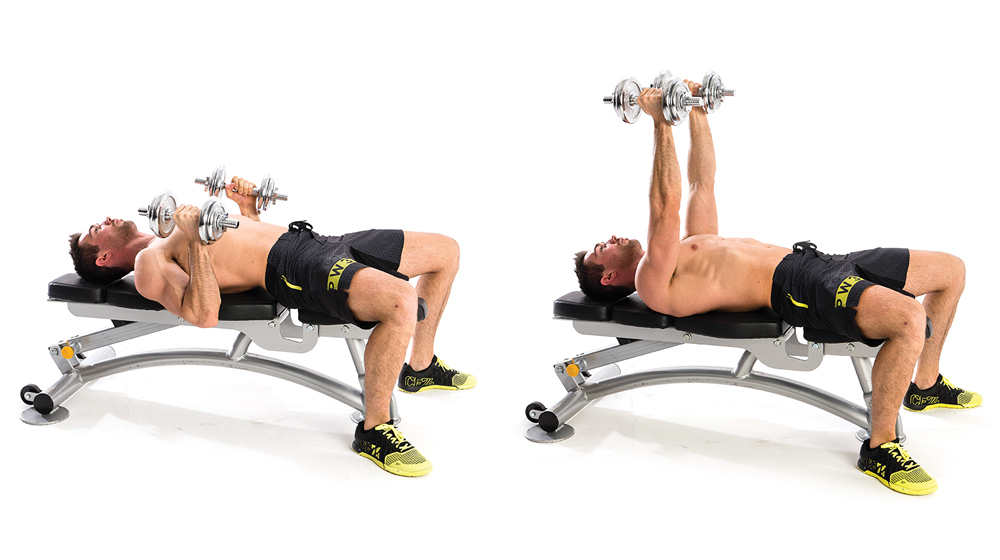
The main function of the pecs in pressing moves is bringing the arms towards the centre of your body. In a barbell bench press, your hands can’t move inwards, but they can with dumbbells for greater pec activation. Lie flat on the bench with your feet planted on the floor, holding a dumbbell in each hand. Press the weights directly up until your arms are straight so that they meet over your chest. Slowly lower back to the start.
4 Spoto press
You’re excused from full range of motion – just this once. In the Spoto press you pause the barbell 2-3cm above your chest before pushing up, to better isolate your pecs and blast through plateaus. Alternate with a standard bench.
5 TRX press-up
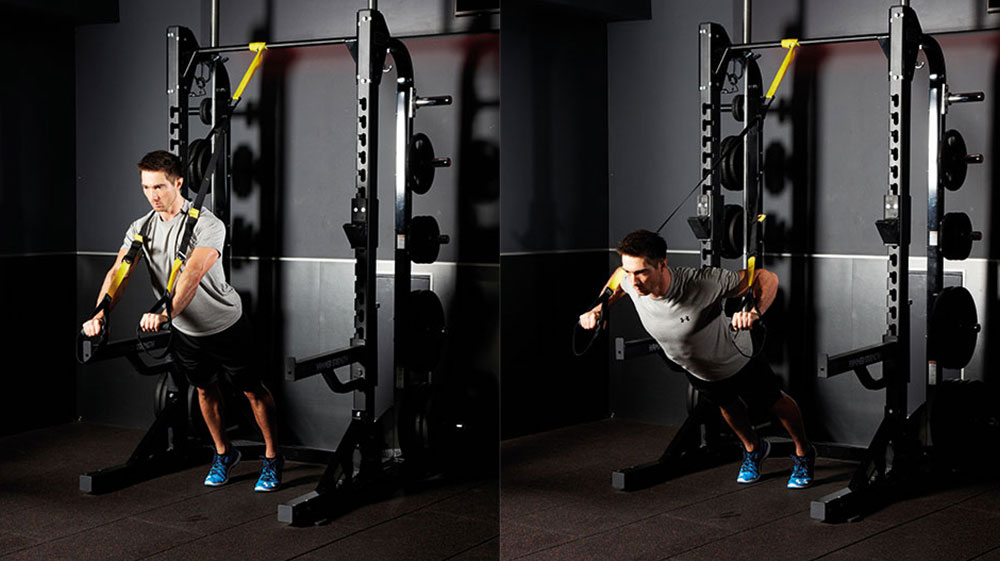
According to the Journal Of Strength And Conditioning Research, doing press-ups on a suspension trainer increases muscle activation in the chest, shoulder and abs muscles. Start with your feet on the floor, holding the TRX handles. Brace your core and glutes to keep your body in a straight line. Bend your elbows to lower your chest, then press back up to the start.
6 Deadlift
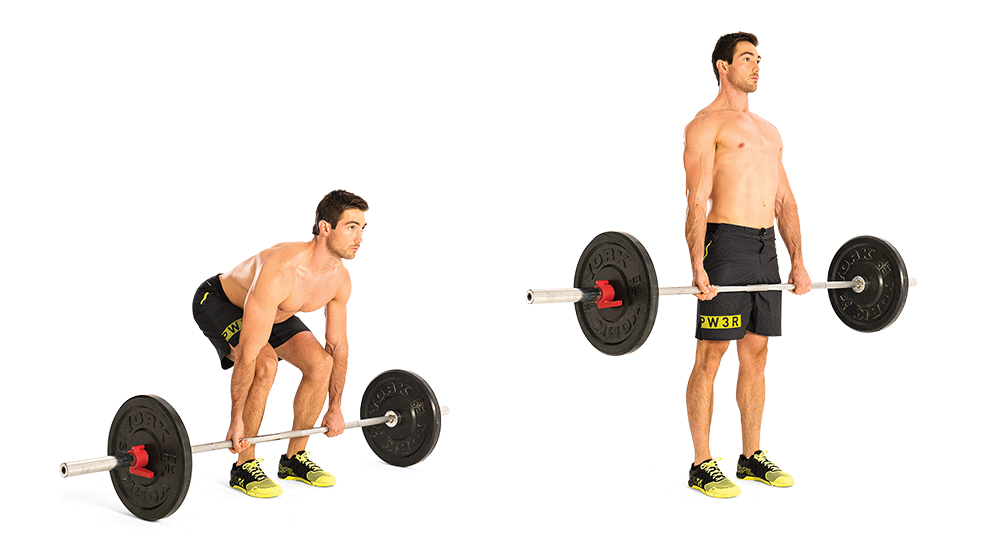
When you bench you should be transferring power from your legs through your core and up to your chest to help stabilise the movement. Your glutes are your biggest muscles in your legs so a lot of the power will come from them. And you'll need to keep them tensed for a significant period of time during each rep of the bench press, which means you should be doing moves that keep them under tension for a comparable amount of time. Deadlifts do just that.
7 Dumbbell triceps extension
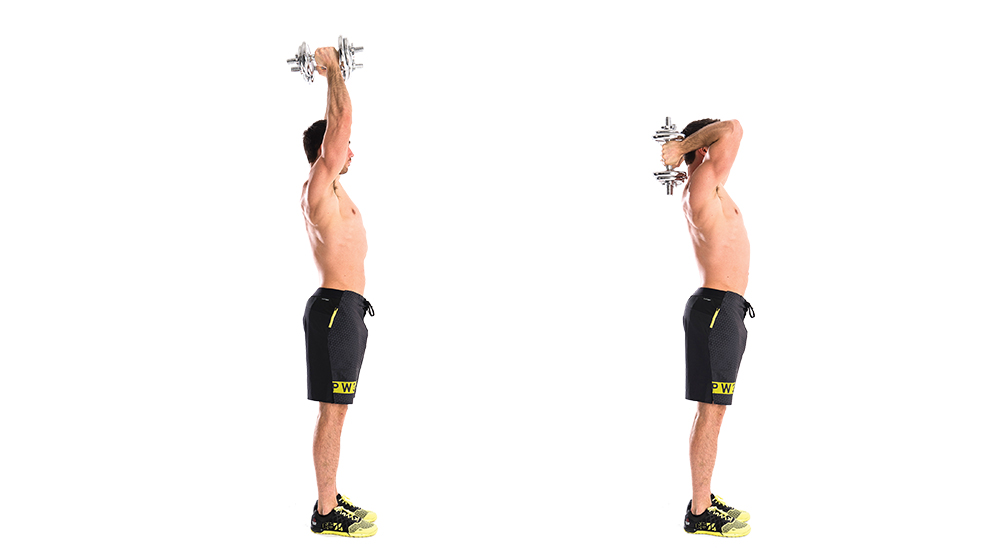
In any big lift you’re only ever as strong as your weakest link, and neglecting your triceps can severely hamper your big bench aspirations. Start with light dumbbells and master the full movement range, then increase the weight.
8 Dumbbell flye
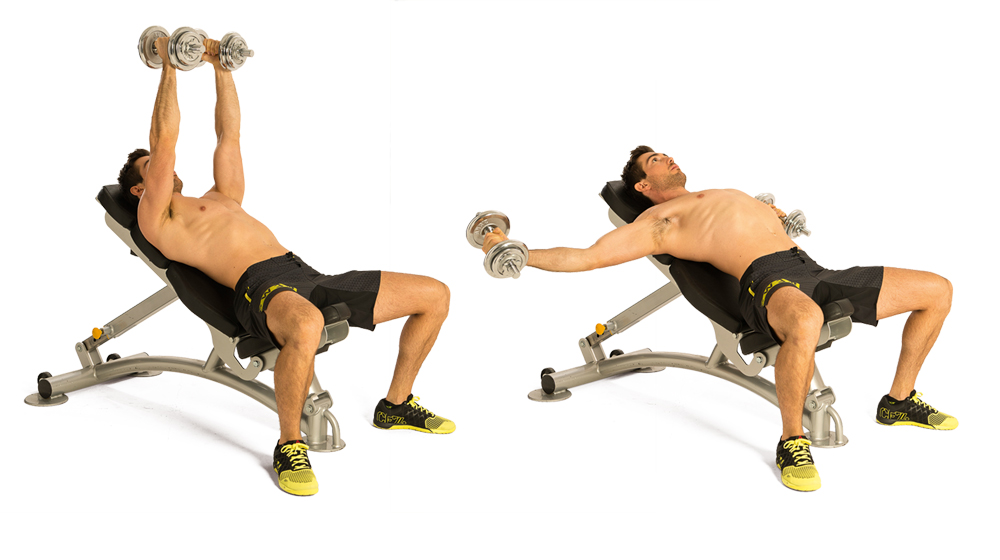
The flye is one of the very few lifts that isolate the chest muscles entirely so that they do all the work. Targeting them like this will help you get a better “feel” for how these muscles move so you’ll have a stronger mind-muscle connection when benching. This allows more muscle fibres to fire at once to get – and keep – the bar moving.
More Tips To Boost Your Bench Press
Here are trainer Tom Wright’s pro-tips.
- Get a grip: “Hold the bar with a hand position that allows your forearms to be parallel when the bar touches your chest. Your wrists should be over your elbows as they pass by your sides.”
- Brace your body: “Keeping your body tight throughout the movement will keep you stable and strong. Squeeze your shoulder blades and raise your chest, while tensing your abs and glute muscles."
- Squeeze the bar: “Once you’re ready, take a deep breath and squeeze the bar hard to fire up your central nervous system. This will elicit a response that will fire up your mind-muscle connection to allow your muscles to contract harder.”
Here are trainer Andrew Watson’s top three tips.
- Break the chain: “Hit a plateau? Swap 15kg with 2x10kg chains. As the chains hit the floor at the bottom of the rep the bar gets lighter, so you can bust through sticking points.”
- Drop the bar: “Load a bar with 5x5kg on each end. Aim for ten good reps, rest for ten seconds, remove one plate on each side and repeat until you’re just pressing the bar.”
- Back it up: “An imbalance between your chest and back will stop you in your tracks. Aim to do as many bent-over rows as bench presses. If you’re too front-heavy, focus on your back until it’s even.”
And here are PT Olly Foster’s top three tips.
- Level up: “Lowering the bar to nipple level allows you to lift the heaviest weight because it keeps your shoulder and elbow joints in their strongest and most stable position.”
- Get engaged: “Bracing your core, tensing your lats and glutes, and arching your lower back will increase how much weight you can put on the bar by keeping your body as stable as possible.”
- Breathe easy: “Inhaling deeply as you lower the bar then exhaling forcefully as you press it back up will keep your torso stable, so lifting a heavy weight feels slightly easier.”
How to Avoid Damaging Your Shoulders
We asked Dan Roberts, former athlete and trainer to film stars, models and other PTs, what to do if you’re worried that bench pressing is ruining your shoulders.
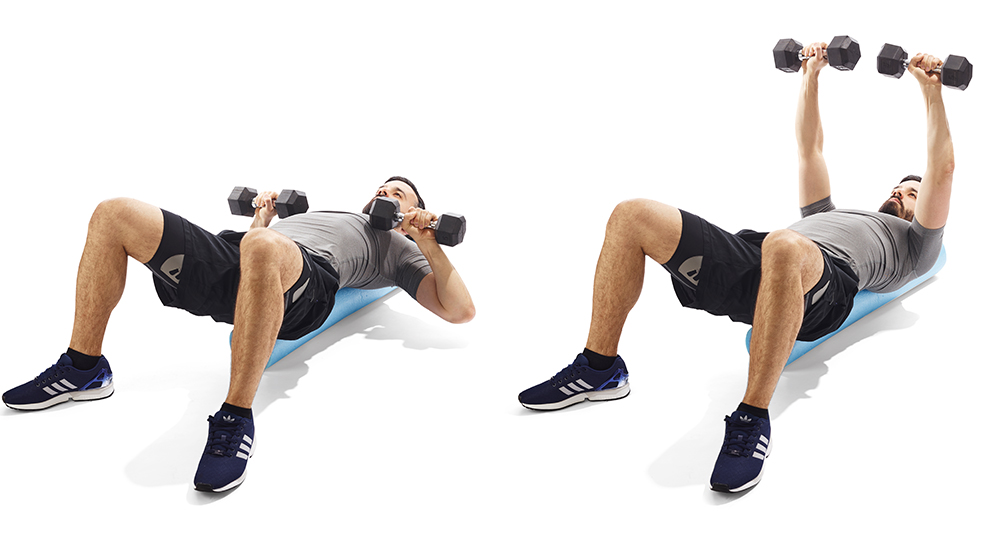
The classic answer would be to do more pulling movements – face pulls and pull-aparts especially – but that’s not the whole story. If you’re developing a hunch, then focus on correcting the bench-press movement itself, so that you can do it damage-free.
Try this: lie on a foam roller so that it’s running down the length of your spine. Focus on “pinching” it with your shoulder blades, so that you almost feel as if you could grip it and pull it off the ground, then get a spotter to pass you a pair of fairly light dumbbells – about 50% of what you’d usually bench. Use them to do a couple of sets of five, and this will “cue” your shoulders into the right position for the rest of your bench session.
From 2008 to 2018, Joel worked for Men's Fitness, which predated, and then shared a website with, Coach. Though he spent years running the hills of Bath, he’s since ditched his trainers for a succession of Converse high-tops, since they’re better suited to his love of pulling vans, lifting cars, and hefting logs in a succession of strongman competitions.
- Harry BullmoreStaff writer
- Nick Harris-FrySenior writer

